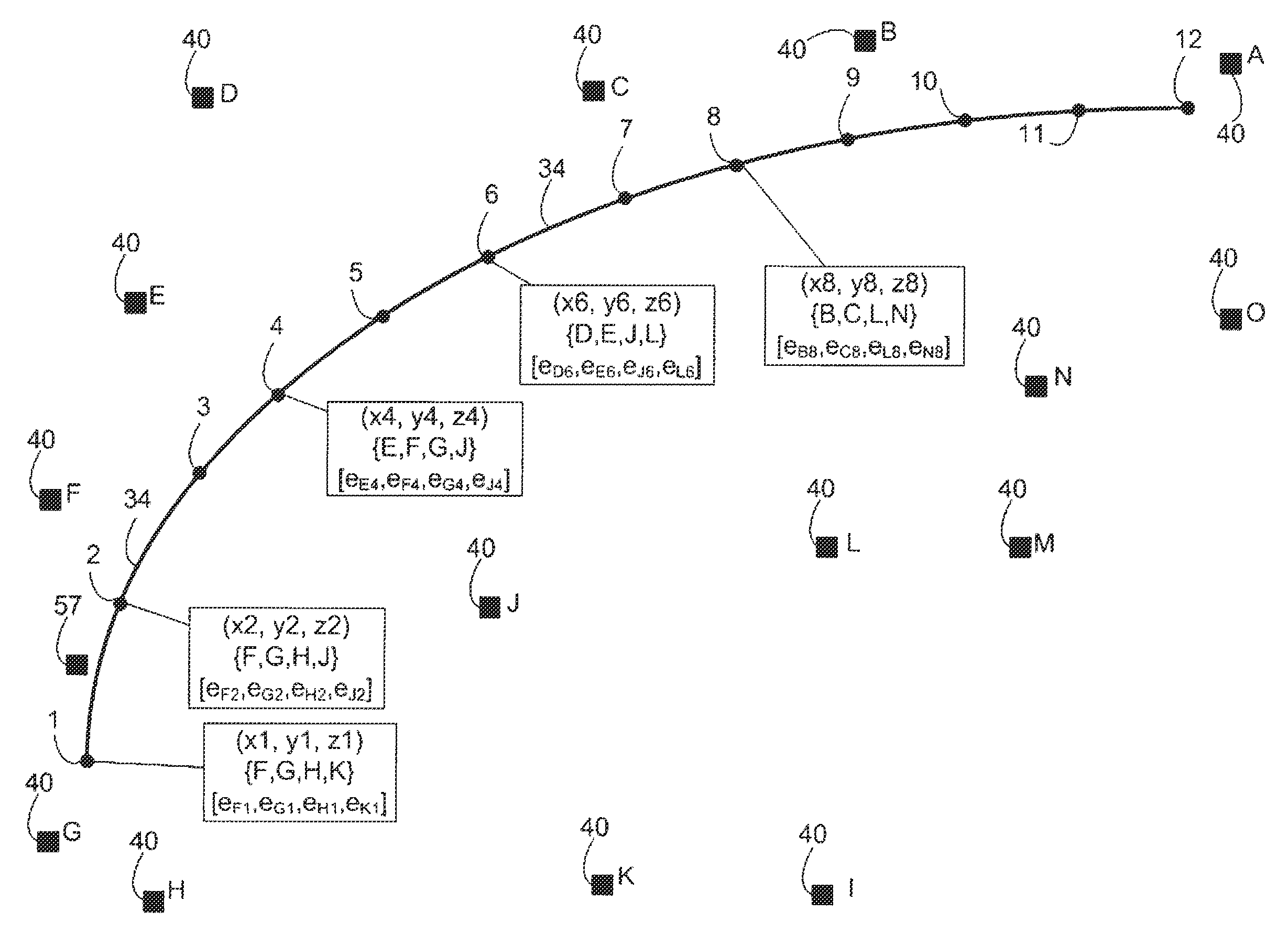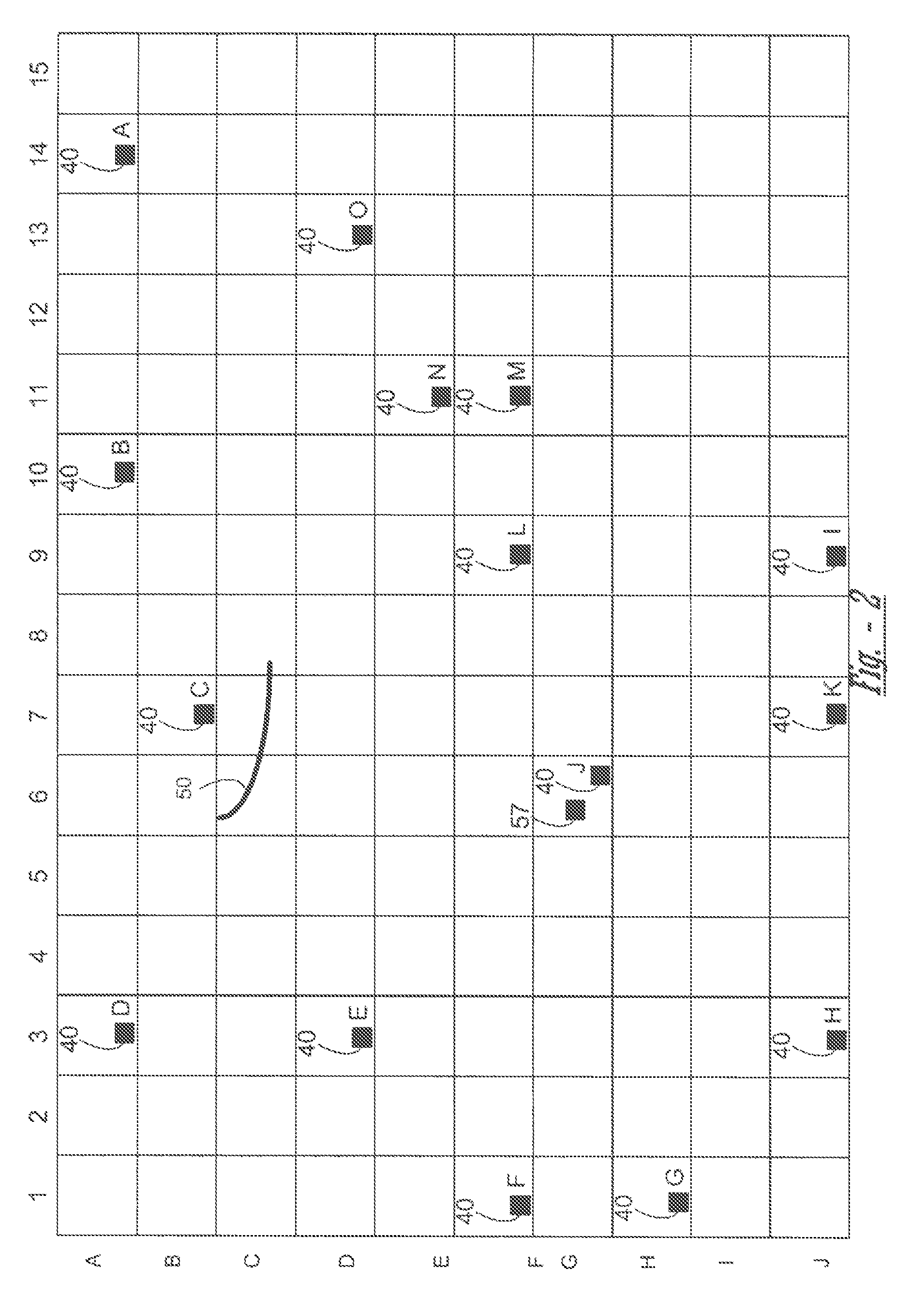Method and system for locating and navigating a target
- Summary
- Abstract
- Description
- Claims
- Application Information
AI Technical Summary
Benefits of technology
Problems solved by technology
Method used
Image
Examples
Embodiment Construction
[0020]The present invention is predicated upon the provision of control and determining location of autonomous vehicles (AVs), particularly locating and controlling the path planning and guidance of autonomously guided vehicle (AGVs or target) in an area of space. The AGV may typical traverse a path based upon a trajectory. The trajectory is typically described by a series of waypoints that are located within a reference frame. For example, the trajectory may be a series of waypoints that are indicated by coordinates (e.g., 1-dimensional, 2-dimensional (2-D) or 3-dimensional (3-D)) in a coordinate system that has been set up for a global or local reference frame such as a map, a space, a plane, a terrain, a city block or the like. The waypoints, if desired, can include a time stamp for velocity reference for the path following control scheme.
[0021]The location or position and / or the heading of the AGV can be determined using a plurality of beacons (or base stations) examples of illu...
PUM
 Login to View More
Login to View More Abstract
Description
Claims
Application Information
 Login to View More
Login to View More - R&D
- Intellectual Property
- Life Sciences
- Materials
- Tech Scout
- Unparalleled Data Quality
- Higher Quality Content
- 60% Fewer Hallucinations
Browse by: Latest US Patents, China's latest patents, Technical Efficacy Thesaurus, Application Domain, Technology Topic, Popular Technical Reports.
© 2025 PatSnap. All rights reserved.Legal|Privacy policy|Modern Slavery Act Transparency Statement|Sitemap|About US| Contact US: help@patsnap.com



